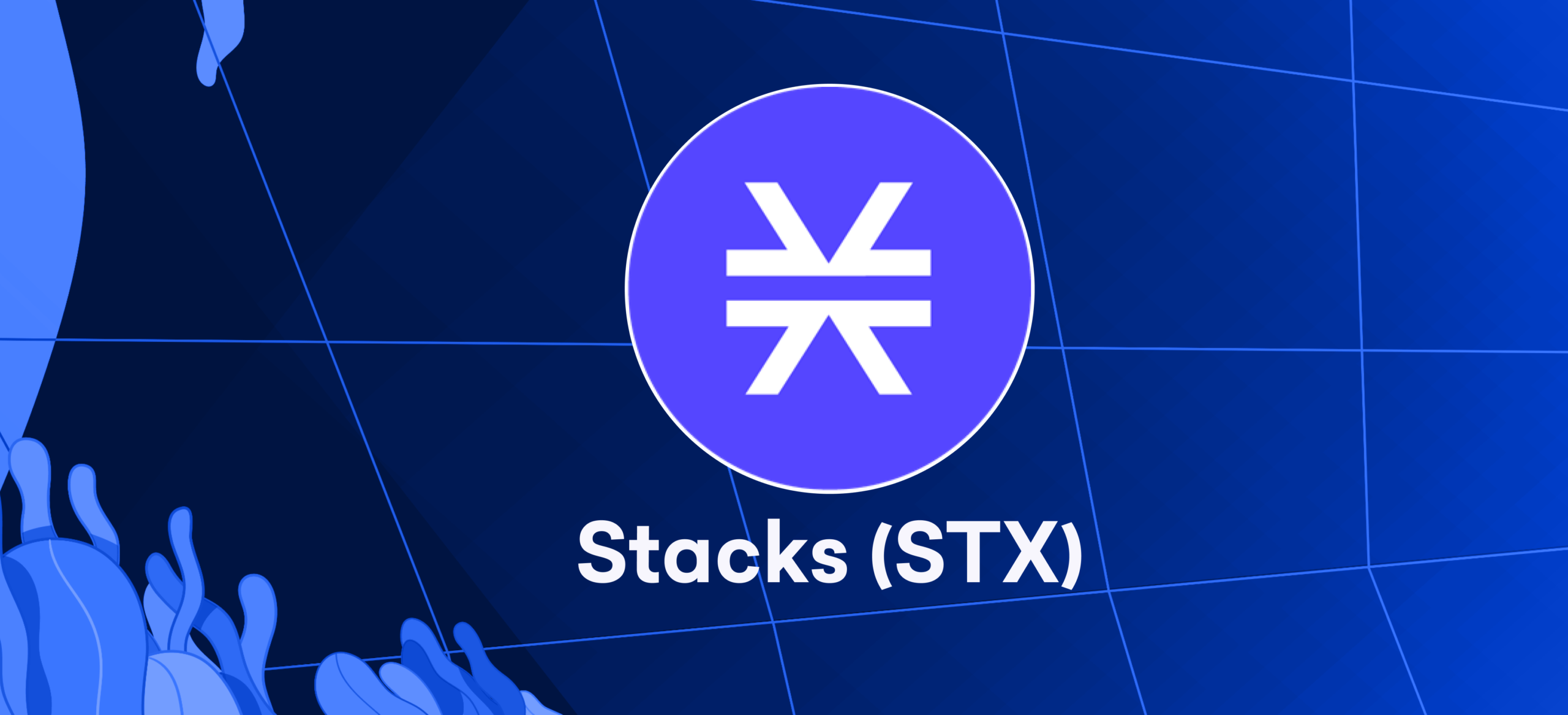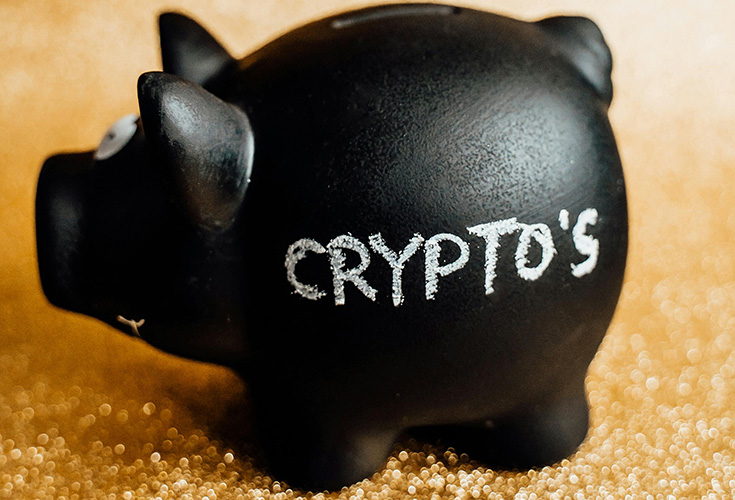
Introduction
Stacks (STX) is a pioneering blockchain project that extends Bitcoin’s capabilities beyond simply being a digital currency into a foundation for decentralized apps (DApps) and smart contracts, all while leveraging Bitcoin’s unmatched security. Thanks to the Stacks blockchain, this transformative technology creates a unique ecosystem where Bitcoin is a store of value and a programmable base layer.
How Does Stacks Work?
Stacks are built on the Bitcoin blockchain, using Bitcoin as a settlement layer. The Stacks network links to Bitcoin through the Proof-of-Transfer mechanism, which parallels Bitcoin’s Proof-of-Work (PoW) consensus. Proof-of-Transfer (PoX) is an adaptation of Proof-of-Burn (PoB). With PoB, users “burn” or destroy their own Bitcoin to mine new blocks on the Stacks network. The burned Bitcoin recycles work already done in Bitcoin’s Proof-of-Work consensus.
However, with PoX, instead of burning the Bitcoin, miners must send Bitcoin to specific Bitcoin addresses that participate in consensus. The ability to produce blocks on the Stacks blockchain is determined through a process called sortition, in which miners compete to be chosen to produce the next block by sending Bitcoin to predetermined randomized addresses. This process ensures that block production is decentralized and fair.

To build new blocks in the Stacks blockchain, miners commit each block’s block hash to the Bitcoin chain using the OP_RETURN in Bitcoin transactions. This means the state of the Stacks blockchain is settled on the Bitcoin blockchain and benefits from its immutability. Stacks nodes can use this data stored on the Bitcoin chain to verify the integrity of the Stacks blockchain state.
Metadata from newly mined Stack blocks is anchored to every Bitcoin block, allowing users to verify the canonical Stack chain via Bitcoin blocks. Additionally, because only the block hash of the Stacks block is written to the Bitcoin chain, the blocks can include thousands of transactions without taking up additional block space.
Who Founded Stacks?
The project started in 2017 when Muneeb finished his PhD (his thesis laid out the foundations for the Stacks layer for Bitcoin), released the original whitepaper, and raised $50M. Before this, the early team built protocols and apps on Bitcoin L1 before working on Stacks in 2017. This TEDx talk represents some early visions of the project.
In 2019, the first-ever SEC-qualified token offering (see WSJ article) was held for the general public, including the US. The full offering material disclosed everything and anything about the project/company/people.
From 2018 to 2020, the team was busy building the Stacks infrastructure. It’s a programming layer for Bitcoin (it works like a blockchain with cross-chain consensus with Bitcoin) and Clarity lang, a safe language. Some technical resources are here.
Unique Features of Stacks
- As a Bitcoin layer for smart contracts, Stacks has the following innovations that make it unique:
- In the upcoming release of Stacks, the entire hash power of Bitcoin will secure Stacks, giving it Bitcoin finality.
- Stacks will soon have a novel-backed Bitcoin that is 1:1 backed with BTC on Bitcoin L1 and can be moved in and out of the Stacks layer decentralized.
- The new 1:1 Bitcoin-backed asset called sBTC enables Stacks smart contracts to write to Bitcoin.
- Stacks power atomic BTC swaps and assets owned by BTC addresses.
- Stacks uses the Clarity programming language for safe, decidable contracts.
- Thanks to Proof of Transfer and Clarity, Stacks knows the full Bitcoin state, enabling it to read from Bitcoin anytime.
- Lastly, the Stack is a scalable layer that enables fast transactions that settle on Bitcoin.
How Many STX Coins Are Currently in Circulation?
The Stacks cryptocurrency’s predefined future supply will reach approximately 1,818M STX by 2050. The Stacks ecosystem is a collection of independent entities, developers, and community members working to build a user-owned internet on Bitcoin. No entity in the space holds more than 10% of the circulating STX supply. Even the early investors/entities generally hold less than 5%. The stats self-report and update over time based on on-chain data.
What Factors Contribute to the Value of Stacks?
While miners commit BTC to generate new Stacks (STX) tokens, STX coin holders can stack their tokens to earn Bitcoin as a reward. How profitable the mining system will prove for miners in the future remains to be seen and will depend on many factors, the primary among which is the relative price of STX vs. BTC.
The price of STX has been nothing short of stellar in 2021. However, its long-term value will depend on the take-up of the Stacks platform and the continued growth of Clarity-powered smart contracts. Should this growth stagnate, the price of STX could suffer to the point that no miners are willing to commit their BTC in exchange for Stacks tokens. This is important because smart contract developers need STX tokens to add their contracts to the blockchain, and users need STX to pay gas fees when executing the contracts.
How does The Stacks Network secure itself?
Stacks uses the Bitcoin blockchain as its base layer. As a Proof of Work (PoW)–based blockchain, Bitcoin uses the combined efforts of thousands of miners and nodes to protect the network against attacks by making it computationally and economically unfeasible to subvert it.
Stacks introduces its consensus model, known as proof-of-transfer (PoX). It’s a novel mining mechanism in which users transfer the base currency (BTC) to mine STX—effectively bootstrapping the security of the Stacks blockchain using BTC.
How to Use Stacks
The primary use case for the STX token is to fuel the connection between Stacks and Bitcoin via the Proof of Transfer consensus. In addition to powering the consensus mechanism, STX also supports the creation of smart contracts, dApps, and memorable and transferable virtual assets. Users can use STX to publish new contracts to the blockchain and to pay the transaction fees that support the execution of these contracts. This process involves burning the STX tokens used in this way.
Other functions of the STX token include voting on upgrades to the Stacks protocol and participating in selecting app reviewers. Finally, users can stack their STX by staking—yes, the two terms are easily mixed up, but it works relatively simply. Users need to hold a certain minimum amount of STX, which they can then ‘lock u” on the network in return for rewards. The system pays out rewards in BTC and makes them available approximately two weeks after the end of each reward cycle. BTC miners earn rewards from the right to mine new blocks of STX.
How to Select a Stacks Crypto Wallet
When choosing a Stacks Wallet, there are many things to think about. First is whether you want a hot wallet or a cold wallet. Hot wallets are online and more convenient, but they may also be vulnerable to hacks. Cold wallets are offline, reducing vulnerability to attacks but less convenient as transactions require a manual internet connection for each one. In the case of paper wallets, you would have to enter them into a hardware wallet for any transactionsnto take. Additionally, people often keep cold storage wallets in secure places such as bank vaults, which may not be easily accessible.
Then, consider custodial versus self-custodial wallets. Although they are easy to use, custodial wallets have many login attacks, data leaks, and social engineering attacks. It is portable. The company can also become insolvent, making it impossible for you to access your holdings; therefore, many cryptocurrency holders opt to use self-custodial wallets, with their whole control over assets being the driving factor. The self-custodial wallet enables one to act as his bank; hence no need for transaction and withdrawal confirmation from third parties. For this reason, default encryption of private keys in the system guarantees the user’s control over his property.
After doing all these things, start looking at different Stacks Wallets. Xverse is a self-custodial hot wallet for Stacks, which leads them all. The in-app browser connects users to Bitcoin dApps, where they can hold NFTs and earn Bitcoin rewards through the Stacking pool. Being a Chrome extension app allows viewing Bitcoin NFTs on the desktop, which makes it unique in functionality.
How and Where to Buy STX Tokens
Discover where and how to buy STX after knowing its features and basics. Below is a guide on buying STX tokens using Xverse:
- First, download the Xverse wallet on iOS or Android plus a Chrome browser extension.
On your wallet home screen, click/tap the buy button to purchase from Binance, MoonPay or Transak.
Enter the amount in STX you want to buy and your Xverse wallet address.
Verify email as well as basic information.
You can purchase STX with any payment method and deposit the tokens directly into your Xverse wallet.
Conclusion
Stacks represent a big step ahead for blockchain technology, which makes smart contracts and DApps secured by Bitcoin possible. With its innovative consensus mechanism and unique tokenomics, Stacks is creating a new era of decentralized applications (dapps) and financial systems. Its emphasis on community and development also enhances its potential impact.
FAQs
What is Stacks (STX)?
Stack is a blockchain that enables smart contracts and decentralized applications (DApps) on Bitcoin, using its security powered by the PoX consensus mechanism.
How does Stacks work with Bitcoin?
Stacks connect to Bitcoin via the Proof of Transfer consensus mechanism, which allows Bitcoin to secure smart contracts and transactions.
What makes Stacks unique?
Security through integration with Bitcoin, Clarity programming language for smart contracts, and earning of Bitcoin rewards through the Stacking mechanism.
Can I earn Bitcoin with Stacks?
STX holders can earn Bitcoin rewards by participating in Stacking, the network mechanism.








